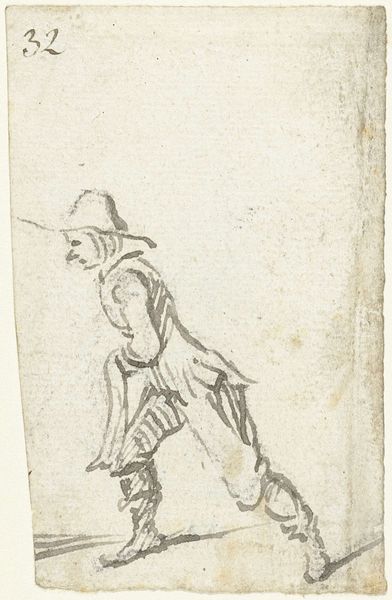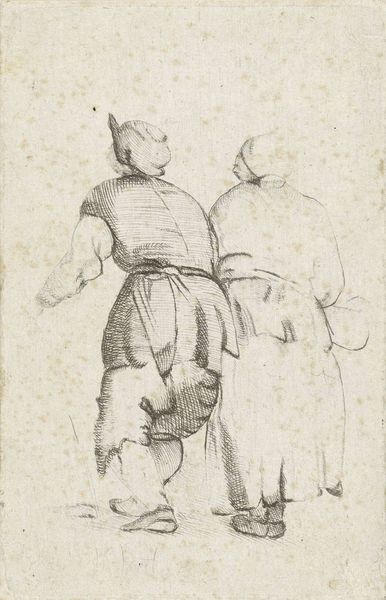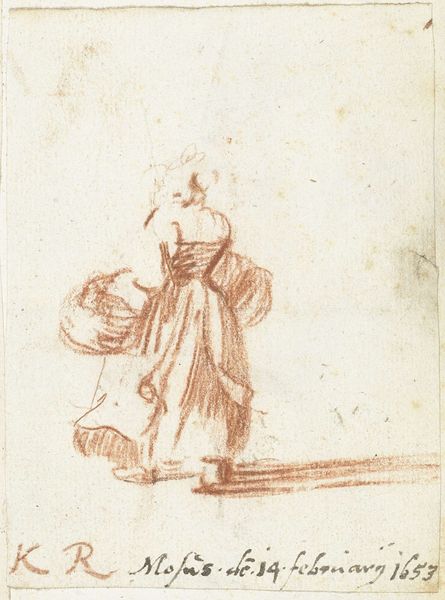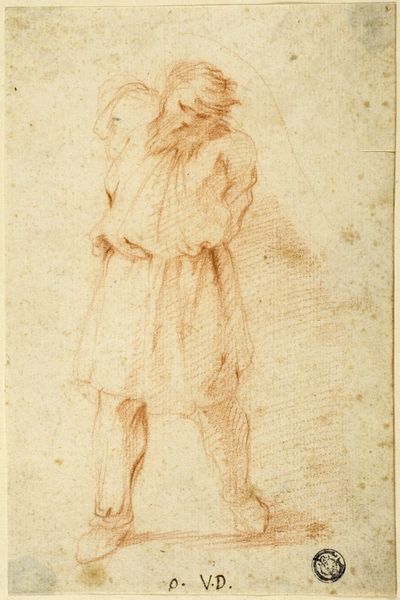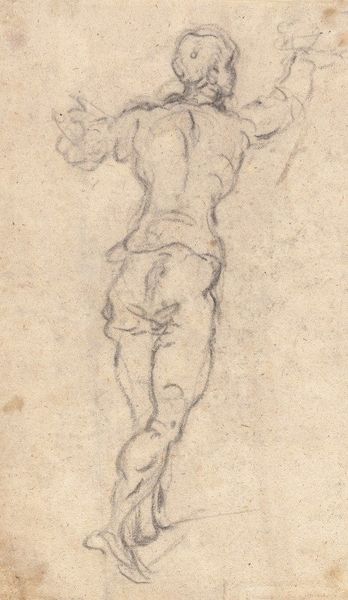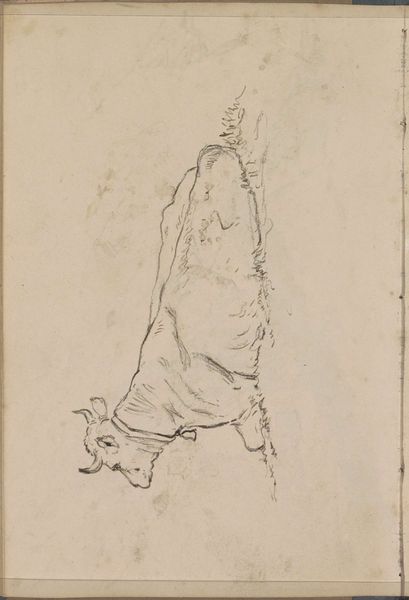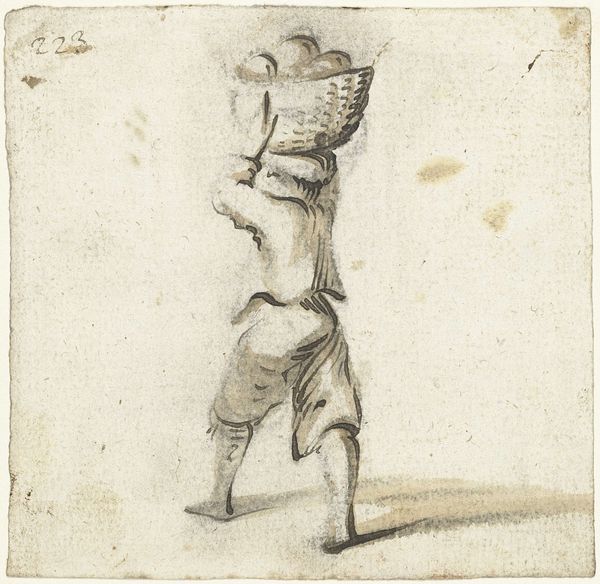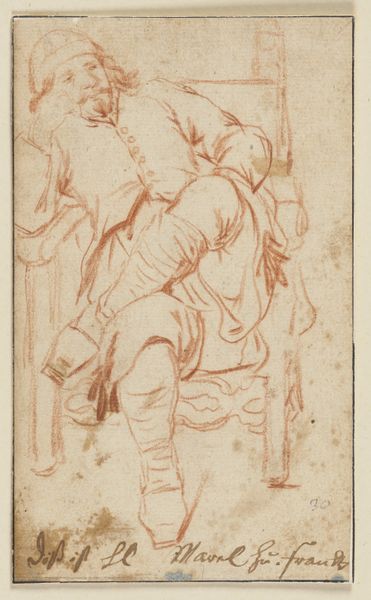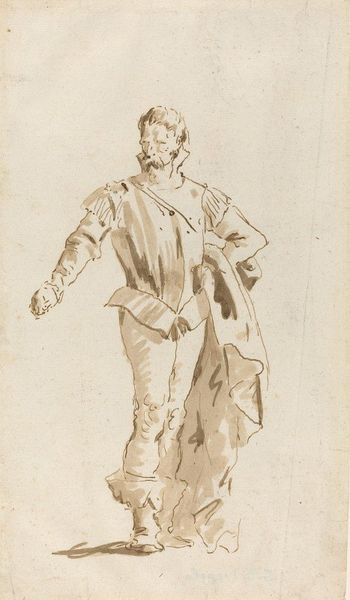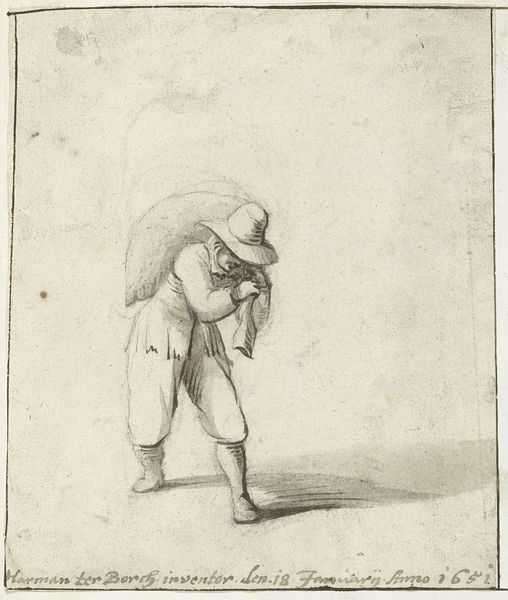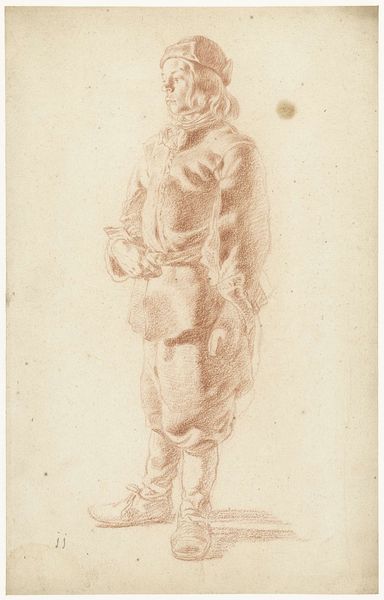
drawing
#
portrait
#
drawing
#
baroque
#
genre-painting
Dimensions: height 108 mm, width 78 mm
Copyright: Rijks Museum: Open Domain
Curator: We’re looking at a drawing titled "Jongen met mand, van achteren" or "Boy with Basket, from the Back," attributed to Harmen ter Borch, possibly from 1649. It’s currently held at the Rijksmuseum. What strikes you most when you first see this sketch? Editor: Its apparent mundanity, perhaps. There’s an interesting stillness, despite the suggestion of movement— the boy striding, viewed from behind. Yet, that unseen face renders him strangely anonymous, open for varied projections onto his role within 17th-century Dutch society. Curator: Precisely. Observe how Ter Borch uses the limited sepia ink to create a sense of depth. The rendering of the boy's jacket, for instance— the articulation of folds suggests materiality through a highly efficient economy of line. Consider too how he captures reflected light in a monochromatic tonality, establishing form with minimal strokes. Editor: Yes, and if we consider the socio-economic implications of this genre scene: does the boy sell his wares? Is he in service? Does the basket weigh him down? This representation invites reflection on labour, youth and potential exploitation. Was the piece ever intended for an affluent clientele, providing a window into working-class existence? Curator: You're raising fascinating points about class dynamics! But within the context of formal analysis, note how the hat mirrors the curve of the basket, an aesthetic harmony despite their functional difference. See how the artist is playing with contrasts of form! The softness of the hat, the textured weave of the basket, all conveyed with subtle changes in pressure and line weight. Editor: These formal elements undoubtedly enhance the composition, yes. However, situating this within the Baroque tradition also invites speculation. Does the subject challenge or uphold social order? What were Borch’s politics and privileges? I argue, then, that the artistic choices of the piece subtly direct and inflect perception of the represented boy and his time. Curator: A beautiful insight. It is clear that both formal attributes and social perspectives can coalesce and mutually expand to illuminate artistic expressions, even when looking at the same simple Baroque sketch! Editor: Yes. Ultimately, interrogating artwork with multiple lenses, helps create inclusive, deeper understandings.
Comments
No comments
Be the first to comment and join the conversation on the ultimate creative platform.
